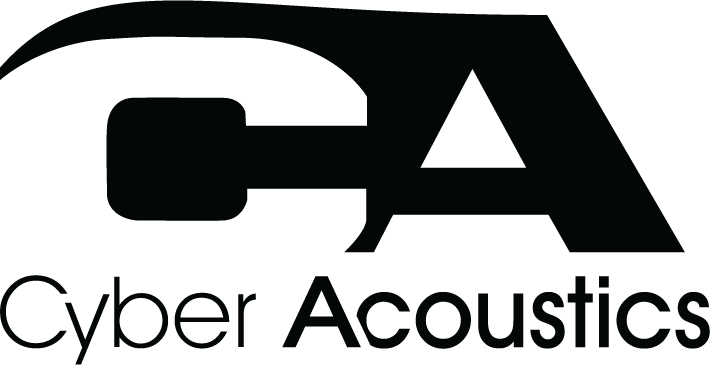Send in the Drones: Lessons Learned from On High
Wednesday, January 11, 2017 by Cyber Acoustics
For less than $100, drones can create educational opportunities that previously would have been impossible for schools to afford. With companies like GoPro, Parrot, Syma, and DJI constantly enhancing features while lowering the overall cost, a wealth of new opportunities are available to educators and students.
Cracking open and/or building a drone can be a comprehensive lesson on robotics, engineering, and various other technology-related fields of study, and the technology present in the remote-controlled device is evidentiary of mankind’s learning throughout history in many regards. But, flying drones have many educational uses other than the obvious building and programming curriculums.
Here are 10 lessons that can be taught with drones …
Math: Practical application of formula
Drones can be programmed and flown to illustrate important concepts like our understanding of space, distance, and time.
You can calculate average speed using the equation: speed = distance ÷ time. You can test to see how fast your drone is traveling from point “A” to point “B”.
Math: Visualizing relative size, distance, and space
The “Powers of Ten” video is a well-known example that illustrates magnitudes in action through a view that zooms out from a picnic and enters into the vast expanse of space.
You might not have access to a drone that can make it to Mars, but you can re-create the video in your school’s neighborhood on a smaller scale to put the same point into perspective. And hey, just because you can’t go into space, it doesn’t mean you can’t introduce your students to the galaxy with your drone!
Science: Planetary Positions & Orbiting patterns
Want to show your students how the planets in our galaxy behave with a little bit more flare than can be achieved through a handheld globe?
Set something up to stand in as the sun, and you can show your students exactly how each planet rotates around the galaxy’s center star. Or, choose the Earth as your focal point and illustrate how the sun manages to appear in different sections of the sky.
Science: Understanding Cell Structure(s)
This is a great one that involves plenty of activity on the students’ part, and illustrates an important scientific concept.
Have your students hold up color-coded signs indicating that they represent different parts of a plant or animal cell. Have students stand in formation to create a completed cell, snap a picture from above, then show them a comparison between the picture you took and an illustration of cell structure to help them understand which part of the cell they were.
You can even take it a step further by videotaping choreographed movements while the students are in formation, in order to illustrate the behaviors of the cell’s parts.
Cartography: Making Maps of Home
Even in a world where GPS abounds, knowing how to read a map is an important skill for students to develop. One great way to introduce the idea of map making and reading is to capture footage of the students’ local area (the immediate area surrounding the school or home works great), and have them make a map using their previous knowledge of the area in tandem with what they can observe in the footage.
Then, have students compare their maps to an official map of the area, so they can see how much attention to detail goes into the field of cartography.
Literature: Illustrating Perspective
Drones probably aren’t the first tool that comes to mind when you think about teaching classic literature and/or writing skills. But it can be difficult to illustrate the concept of perspective to some students, and drones can provide an excellent utility for doing so.
Want to show your learners what first-person perspective as a storytelling mechanism actually looks and sounds like? Film a short story from the drone’s perspective and narrate the story from the protagonist’s perspective. Or, film the same scene from a bird’s-eye view with a different narration to put an omniscient spin on the activity!
Physical Education: Making Game Tape
Whether students have long-term interest in professional athletics or not, there is a ton of teaching potential in being able to review performances in exercise and sporting activities.
Just as a coach can help players review their in-game or practice performance videos to develop better techniques, physical education providers can do the same for the average gym class by providing 360 degree coverage, from above, of students’ efforts and then pointing out area of improvement to the students.
Life Skills: Hand-Eye Coordination
Part of an educator’s role is to prepare students, especially younger ones, with skills that help them through life in general, not just academically. This is a lesson you can put together just to give students some fun interaction with technology, as well as a little practice with hand-eye coordination.
Using everyday items, you can set up an obstacle course for your students to navigate (with adequate adult supervision, of course), getting them outside and involved with technology all at the same time!
Life Skills: Sweeping Leaves
Okay, this one’s mostly just a fun showing off opportunity, but if you teach your students to clean up the leaves like this guy, they’ll have a new way of getting the chores done that also highlights just how resourcefully some people use modern tech!
People are using drones to make life more convenient, but they’re also using drones to preserve life. Hopefully you’ll never need to implement the flying devices this way, but it’s worth considering the potential…
Saving Lives: Fighting Fires & First Aid
That’s right, drones are even being used to save lives these days. From fighting fires to administering First Aid, drones are able to reach places and patients that previously presented risks and enormous challenges to emergency medical professionals.
It’s important for students to understand that technology can be fun and educational, but also that there are huge advantages and benefits to society from developing innovative inventions and tools.
There you have it! From basic math, science, and language lessons to advanced programming and computing concepts, drones have a wide variety of applications to bring your classroom outdoors and to life. Whether you’ve already bought into the equipment as a hobby, or your school is ready to invest in it, get out there and try some of these lessons with your students!
To view the newest drone technology from CES 2017, check out this link: https://www.cnet.com/pictures/the-drones-of-ces-2017/.


